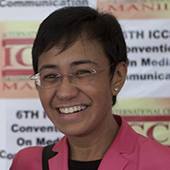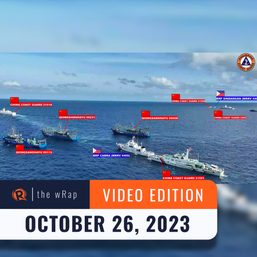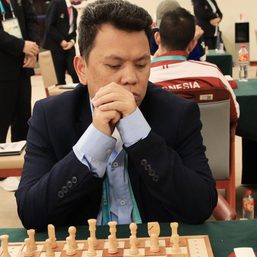SUMMARY
This is AI generated summarization, which may have errors. For context, always refer to the full article.

The town was completely destroyed: no power, no communications, no food and water, more than 80% of the infrastructure demolished. The C130s landed several times on the broken runway. Hundreds of soldiers deployed in formation. They cleared the road of debris and set security checkpoints – the first step to restore order and pave the way for the second wave of officials and aid workers.
At the harbor, 2 ships arrived the first day with officials, aid groups and the military command on board. Informally, we called them “the floating hotel” and “the floating hospital.” After the military cleared the ground, the UN blue tents and vehicles were unloaded. During the day, aid workers and officials worked to clear debris from government buildings, set up tent cities for survivors, set up an administration hub. At night, they had electricity, a place to sleep, a toilet – luxuries in a war zone. The mission was focused on creating systems and processes fast to bring security, food and shelter to a shell-shocked land.
This was September 1999 in East Timor. It could’ve happened in Tacloban City, Ormoc, Borongan or Guiuan, but it didn’t.
In nearly 30 years of reporting from the Philippines and Asia, I’ve seen crisis responses from different governments when the unexpected happens. There are lessons learned. You can predict the broad strokes, and the signs were there in the central Philippines.
Deafening silence
Aside from the warnings, one danger signal flashed early: I don’t remember a time in decades that communications are cut longer than a few hours – not just to a small area but to a far larger swath of land full of teeming cities and towns. Filipino telecommunications companies are experienced in disasters. After all, the World Disaster Report 2012 said we’re the 3rd most disaster prone nation globally – dealing with about 20 typhoons a year.
Super Typhoon Haiyan, Yolanda to Filipinos, hit around 8:30 am Friday morning, November 8. By late Friday afternoon, we knew this would be a disaster of unimaginable proportions – not just because every meteorological agency here and around the world called it a category 5 storm – but because the silence was deafening.
If the Philippines’ national leadership didn’t have a comprehensive disaster plan in place at that point, those crucial hours were the time to lay out the worst-case scenario and get a rudimentary plan in place: What is the immediate military deployment? What resources are available and reachable for the Philippine government? What are the closest ships and aircraft the Philippines can use? How many people could be deployed via air, sea and land? What about the private sector? These are easy questions to ask, easy to plan. On a much smaller scale, news groups do this. You have to be prepared for the worst.
During a live report for CNN a day later on Saturday, November 9, anchor Kristie Lu Stout asked me based on what I had lived through what is needed in affected areas. At that point, the extent of the damage was just seeping out: the area was devastated, roads blocked, hundreds of bodies littered the road. I named four immediate needs: security, food and water, medicines, shelter. From covering nearly every disaster or conflict in Southeast Asia, I would rank security highest because if you don’t have that, you can’t deliver the rest.
Every disaster responder and aid group will tell you the first 24 hours are crucial. There’s a small window for rescue operations. If you miss that, more people will die. Immediately. In times like this, every minute counts. Every minute means a life. That’s true for those trapped in the rubble and for those who survive. Why? Because every minute they don’t have food and water has both a physical and psychological toll. If you leave them alone, desperation sets in. And anarchy follows. Without medicines for days, a person can die of a broken leg.
On Saturday, November 9, Rappler’s Rupert Ambil, who grew up in Eastern Samar, confirmed our fears. The Guardian quotes him from the story he sent us that day: “It’s like the city had been bulldozed, and I was in a different time and place. I saw devastation. I smelled death. I fear anarchy.”
Indonesian tsunami
It’s not the first time the first responders themselves were victims. Let’s look at Banda Aceh, Indonesia and the 2004 tsunami. Indonesia had the highest death toll – about 170, 000 killed there. Because it was fighting an active insurgency, the strongest institution in Aceh was the military. That institution, along with much of the local government, was wiped out by the tsunami. A staggering number of soldiers and their families were killed.
First responders were also victims in Tacloban. Part of the reason anarchy happened was because the security forces sustained immense losses, a death toll still to be released to the public. Sources tell Rappler nearly 1,000 members of the police are still missing, many of them feared dead.
In Aceh, mass burials happened by the second day (partly motivated by religion – according to Islam, the dead should be buried within 24 hours). It took 2 to 3 days before aid started to arrive, partly because the Indonesian government still had a travel block on Aceh because of the insurgency. By Day 4, aid was more systematic in Banda Aceh.
In Tacloban, on Day 5 bodies still littered the streets. Food and water wasn’t getting far out of the airport. Roads were just being cleared. No systematic, large-scale aid distribution was in place. That didn’t start until the 6th day.
Officials are quick to point to the scale of the damage, the strength of the typhoon. President Aquino repeatedly told media that the first responders are the local government units, most of whom were victims.
Still, everyone instinctively believed help should’ve been there faster.
Like in typhoon Bopha – Pablo to Filipinos – the worst typhoon in 2012 which hit land in the Philippines at the end of the year. It was also a category 5 storm, but the military was better prepared to deal with it, stationing helicopters at key positions, sending the aerial photos and video to media within the first few hours.
Actions after Yolanda were clearly not enough. There are heroes – soldiers, police, local government workers who tried their best to cope – but situations like this require systematic responses: in the preparations before, immediate crisis management during, and a clear-headed assessment after of how we can do better next time.
What needs to be done now?
1. Fix the structure
The Philippine government has a structural problem it must address immediately. Experts acknowledge we have some of the best laws on climate change and disaster risk management globally, but we falter in implementation because of numerous layers of bureaucracy.
The crisis doctrine says that local government units (LGUs) – about 1,800 of them – are the first responders. Elected officials have their own understanding of the problem and prepare their responses and workflows based on that. Definitions and workflows need to be standardized across the board then customized for local needs. While the LGUs are first responders on paper, in reality, it’s the military that’s always taken the lead in the past. Let’s be realistic.
Corollary to this, the National Disaster Risk Reduction and Management Council (NDRRMC) is supposed to organize both national and local government units, yet it doesn’t have one dedicated leader. That would help lay the groundwork for understanding the problem and providing the right solutions. Like in news, disaster risk reduction managers can use the same mantra: “Proper preparation prevents poor performance” – what we call the 7 P’s.
2. Experienced crisis leadership and accountability
Who’s the crisis manager? While elected national officials wield tremendous power, many aren’t trained in crisis management. They can learn, but in disasters, that learning curve takes a real toll in lives. In the past, the default has been the military hierarchy, experienced in mobilization, planning and command. The most effective crisis leaders are strategic and tactical thinkers with experience in command and control situations. During a crisis, there is little time to consult. The plan must be vetted and disseminated before the crisis. Crisis means immediate action. Or lives are lost.
Earlier in his term, President Aquino said he didn’t visit a disaster site because he didn’t want to get in the way of the first responders. That remains a wise choice, if the officials in charge are competent. Bringing top-level officials into a disaster zone requires taking much-needed resources away from their primary focus.
3. Depoliticize the flow of information
Information triggers action, and committing to depoliticizing the flow of information means faster collective mobilization. Past crisis responders have said politicians often don’t want to deliver bad news, especially news that contradict what their superiors want to hear.
We must take politics out of disaster management.
4. Prioritize education and cascade
We’ve long seen a gaping need in education about climate change and disaster risk reduction. We need to admit that policy and laws mean little until we can implement them in the real world. The threat is real, and each year brings new challenges. From 2009, when Ondoy, international name Ketsana, dumped more than a month and half’s worth of rainfall in about 24 hours to Pablo in 2012, which swung through areas rarely hit by typhoons, weather disturbances are becoming increasingly unpredictable.
We need to educate not just the first responders and local government officials, but more importantly, the people in the path of the storms. Each town, city and province needs to assess threats, evacuation procedures, building standards and codes, come up with plans to deal with different scenarios, then cascade them to the people.
Project Agos
This gaping need is part of the reason Rappler, in cooperation with front line agencies, started Project Agos, an online platform to deal with responses before, during and after typhoons, weather disturbances and disasters. Climate change adaptation and disaster risk reduction management is not just the responsibility of government. Agos aims to combine top down government action with bottom up civic engagement.
Technology also brings possible new solutions to old problems. Agos uses the concept of crowdsourcing and machine learning – when choices made by volunteers actually teach algorithms to yield better results, a system called AIDR or Artificial Intelligence for Disaster Reduction.
It’s time to rebuild, to plan, to prepare.
We are in this together.
To our government officials: we need you to do better, and we want to help. – Rappler.com
Maria Ressa is the author of “FROM BIN LADEN TO FACEBOOK: 10 Days of Abduction, 10 Years of Terrorism” and “Seeds of Terror: An Eyewitness Account of al-Qaeda’s Newest Center of Operations in Southeast Asia.” She reported for nearly 2 decades for CNN while running its bureau in Southeast Asia before heading the news at ABS-CBN.
Add a comment
How does this make you feel?










There are no comments yet. Add your comment to start the conversation.